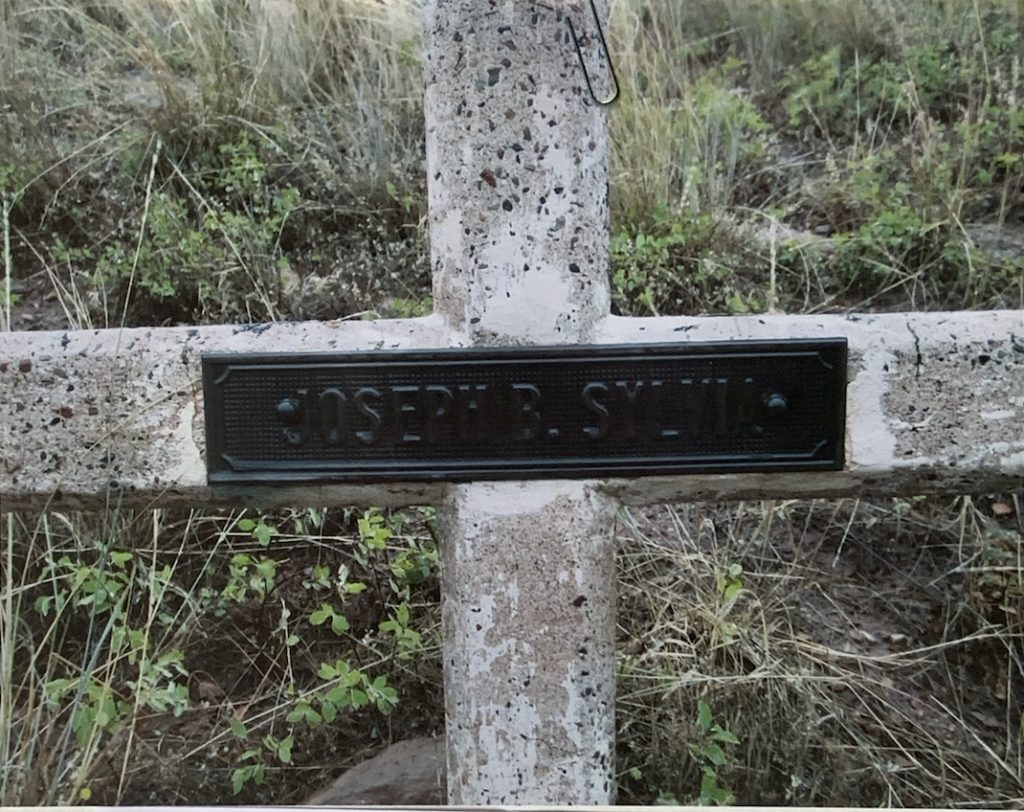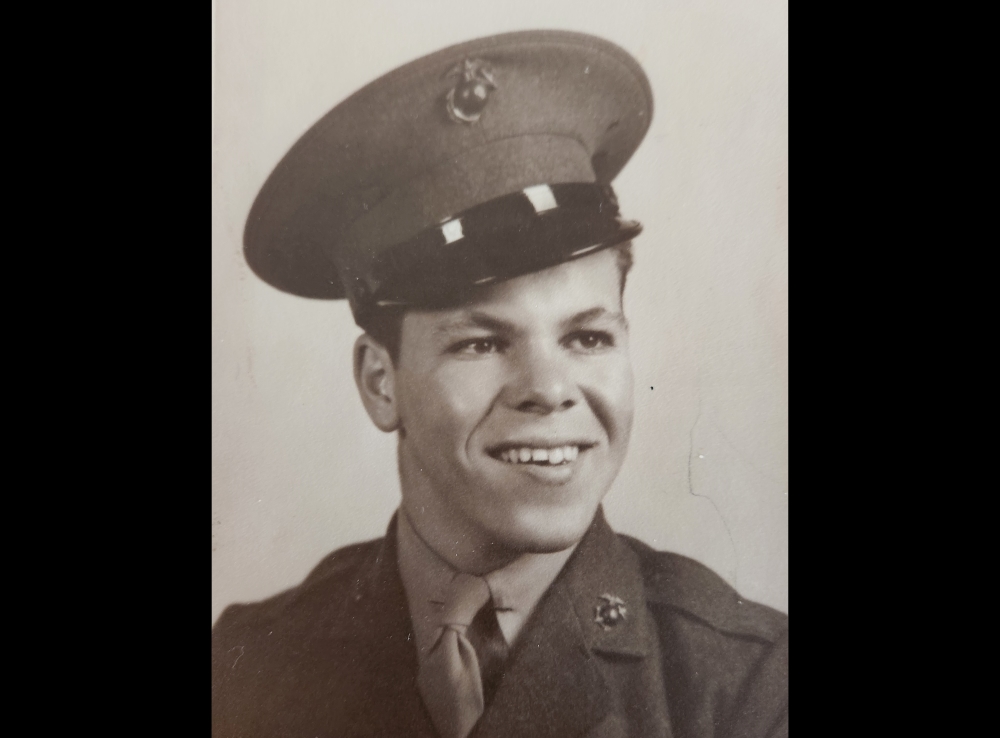High above the wild Montana wilderness, a Douglass C-47 Skytrain flew toward the flames. Inside the plane, 15 men hooked their static lines to the anchor cable and prepared to jump into harm’s way. Some 1,200 feet below them was Mann Gulch, a vast untamed region of mountains and woods in the Helena National Forest, where on Aug. 5, 1949, a wildfire raged out of control.
Standing in the aircraft with the others was Plymouth native Joseph Sylvia. The U.S. Marine Corps veteran of World War II put on his wire face mask and helmet, adjusted his bulky parachute and waited for the signal to go. The 15 smokejumpers – members of an elite firefighting force for the U.S. Forest Service – were ready to drop from the plane and take on what they thought was a routine wildfire, started the night before by a dry lightning strike.
However, nothing about this blaze was normal. Extreme heat and dry conditions had turned withered grass, desiccated scrub, and withered trees into a deadly tinderbox. After the men landed on the ground and started fighting the fire, the wind whipped up and changed directions, sending searing heat and flames in a direct path toward the unsuspecting smokejumpers.
The results were catastrophic. Sylvia and 12 other firefighters were killed by the raging wildfire as it raced up the mountain above Mann Gulch, resulting in the deadliest day in smokejumper history at that time.
On Sunday, Aug. 4, the National Smokejumpers Association will remember the sacrifice of all 13 men 75 years ago, during separate ceremonies across the country. In Plymouth, a graveside memorial will be held at 2 p.m. at Sylvia’s final resting place in St. Joseph Cemetery on Summer Street.
“My father didn’t want Josie [as the family called him] to join the smokejumpers,” recalled Alton Sylvia of Plymouth, who was 10 when his brother died that day. “He survived fighting the Japanese in the Pacific. Now this. ‘You’re not a cat with nine lives,’ he told him.”
But Sylvia was young, adventurous, and loved the outdoors. As a child, he often fished in Plymouth Harbor from a homemade boat. Born in 1924, he volunteered for the Marines during World War II, seeing action at Iwo Jima and Saipan. After the war, he returned to Plymouth but soon left for the University of Minnesota, where he studied forestry on the GI Bill.

Sylvia learned about the smokejumpers and wanted to be part of this new group fighting forest fires. He went to jump school, made it through the Forest Service’s rigorous training program, and was accepted into the unit. He loved parachuting into the wilderness to knock down blazes.
“Despite the danger, people rarely die fighting wildfires,” said Roger Archibald of Quincy, a member of the National Smokejumpers Association who will officiate at the Sylvia ceremony on Sunday. “Injuries are common, but deaths are not. You can only stay safe for so long, though.”
At Mann Gulch, Sylvia and the other smokejumpers were joined by another firefighter as they dug a fireline along a ridge above the blaze. Below them, they could see the smoke and flames as the fire raged along the Missouri River. Then the wind shifted and created a “blowup,” causing the conflagration to change direction.
At first, the men did not realize the danger. Soon, though, they could feel the heat as the flames raced up the mountain. Crew foreman Wagner Dodge was startled by what he saw happening below him.
“Pushed directly upgulch by the turbulent wind, the fire swept through the treetops, covering 120 feet every minute, moving four to six times faster than the fire on the ground,” wrote Mark Matthews in his 2007 book “A Good Day to Fight Fire: Mann Gulch, 1949.” “The crew ahead began their retreat up the gulch with a 400-yard head start, a distance the fire could cover in six minutes.”
Weighed down by heavy protective clothing and cumbersome jump boots, the men scrambled up the 70 percent incline in hopes of getting over the peak and escaping the fire. They were slowed by the rocky slope and slippery grass, which caused them to stumble and fall.
Dodge remembered a technique about starting a small fire to create a safe zone and let the searing flames pass over him. He waved frantically to the rest of the smokejumpers to join him. They didn’t know about the tactic and thought Dodge was crazy, so they continued stumbling up the ridge. The foreman laid down in the burned-off patch and was saved from serious injury.
Sylvia and 12 other men were not so lucky. The white-hot flames overtook them, killing some instantly and leaving others with severe burns. Sylvia was one of the latter. He was alive when rescuers found him and in good spirits. The scorching fire had seared nerve endings so he felt no pain on his blackened skin.
Because of the remoteness of the site, the men were not rescued until the next day. Sylvia was taken to a hospital, where he died on Aug. 6. The other burn victims also succumbed to their injuries. The only survivors were Dodge and two smokejumpers who managed to crest the mountain and find safety on the other side.
The news of Sylvia’s death hit the family hard in Plymouth. Alton and his siblings were devastated, as were their parents.
“It was a helluva way to die,” said Alton Sylvia, who planned to visit his brother in Minnesota in the summer of 1949 but couldn’t do so because of all the fires that year.
The death also deeply affected Terry Van Sickle’s mother, Donna, who met Sylvia at college. “Mom got pregnant but told Joe to finish his education,” said Van Sickle, who was 3 when his father died. He has no memory of the person he knows only from photos. His mother married another man, who adopted Sylvia’s son.
At Mann Gulch, memorial markers were placed where the smokejumpers fell. For the 65th anniversary of the fire in 2014, Van Sickle traveled to this still remote wilderness and climbed the steep grade to find his father’s cross.
“I was in awe of Joe and the others,” he said. “It was such rough terrain and so difficult scaling that mountain. There are still charred trees there. They were fighting a fire that was out of this world.”
Van Sickle will be unable to attend the ceremony in Plymouth, though Alton Sylvia, 85, and his wife Shirley, along with other family members, plan to be there Sunday. A special medallion has already been placed on the headstone by the National Smokejumpers Association.
“Joe was a hero,” Alton said. “I am very proud they are doing this.”
Norman Maclean, best known for his 1976 book “A River Runs Through It and Other Stories,” was at the airport in 1949 when the smokejumpers took off to fight the Mann Gulch Fire. He was always haunted by that memory. Some 40 years later as an old man, he undertook a journey to discover what happened on that mountainside. Published posthumously in 1992, “Young Men and Fire” is a masterful account of the tragedy that day in 1949, written in powerful prose as only Maclean could do it.
In the book, he described the plume of ash that arose from that deadly blaze:
“When the blowup rose out of Mann Gulch and its smoke merged with the jet stream, it looked much like an atomic explosion in Nevada on its cancerous way to Utah. When last seen, the tri-visual figure had stretched out and was on its way, far, far, far away, looking like death and looking back at its dead and looking forward to its dead yet to come. Perhaps it could see all of us.”
Dave Kindy, a self-described history geek, is a longtime Plymouth resident who writes for the Washington Post, Boston Globe, National Geographic, Smithsonian and other publications. He can be reached at davidkindy1832@gmail.com.

